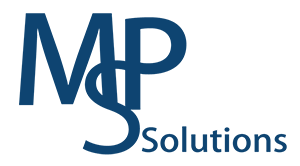Have you explored the SAP Business One accounting software yet?
The SAP Business One ERP solution was specially developed for small and medium-sized enterprises, with the goal to automate business functions such as operations, human resources, and financials.
Why should businesses choose SAP Business One accounting software over others?
Enterprises have gradually shifted away from other accounting solutions to ERP solutions, especially SAP Business One. This is mainly because while other solutions may work for startups, expanding organizations need the deeper and broader ERP capabilities.
SAP Business One solutions’ main advantages include sales and customer management, reporting, inventory and distribution, accounting and finance, and purchasing and operations. The solution allows for more efficient and faster operations at scale via rapid access to business information and ensured security for organization-wide utilization.
The biggest flex for SAP Business One over other existing solutions is in the areas of Inventory management, reporting, platform integration, and growth support. When users shift to the accounting software of SAP Business One, they will find the major advantages in scenarios like easy to maintain visibility into an expanding inventory, improved system performance that enhances employee productivity, proper integration between SAP Business One and other applications that result in efficient flows, and reduced manual data entry which decreases the error rates.
The SAP Business One ERP system provides a complete and comprehensively integrated system that manages all the accounting and financial requirements of expanding distribution and manufacturing organizations. The solution tries to streamlines and simplifies the financial management workflows via real-time posting and automation.
The new SAP Business One solution has accounting and financial tools that are capable of supporting business process like: Banking and Reconciliation, Accounting, Financial Reporting and Controlling (or Cost Accounting)
Accounting: The tools help manage all the accounting transactions at a unified place. This includes account setup, general ledger, budgeting, journal entries, and maintenance. The tools also help with the handling of multi-currency transactions and simplification of processes via automatic tax calculations.
Banking and Reconciliation: This software is used to accurately reconcile accounts and process all transactions, including checks, cash, credit, and debit cards. Account data is received from the banks via an electronic bank statement, and the same is automatically filled in the required balance sheets.
Financial reporting: This feature boasts of easy accessibility and development of a wide range of customizable and standard financial reports like cash flow analysis, multi-person comparisons, balance sheets, transaction reports, profit-loss statements, and budget reports.
Cost accounting/Controlling: It helps handle cash flows, monitor budgets, and compare planned budgets to actuals for a current and accurate view of the business operations. Setting up distribution policies that allow automatic allocation of funds to profit stores relevant to predefined terms.
The increased multiple customization options offer the manufacturing and distribution organizations methods to manage profitability and cash flow easily. Enterprises can define their profit centers and the sets of distribution sets that allow automatic distribution amounts to the aforesaid profit centers.
Additionally, the solution allows tracking and allocating indirect expenses like advertising, financing, and administrative costs, which can be divided across multiple categories.


Recent Comments